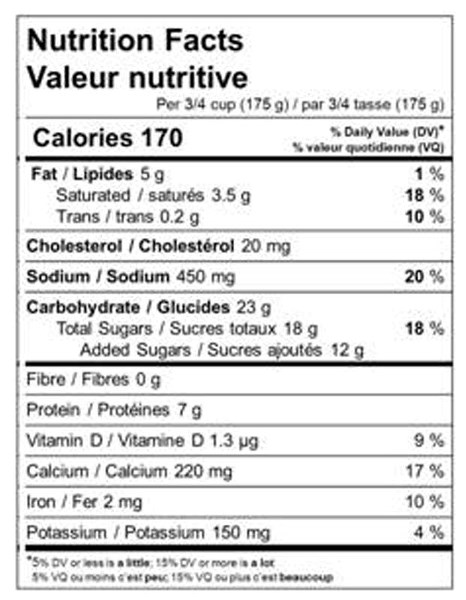Proposed changes to nutrition information on food labels are receiving positive reaction in St. Albert.
The proposed changes to the labels that list the ingredients and nutrients found in prepackaged foods were announced in Edmonton last week.
The amendments come after three months of community consultations across Canada, including a meeting between Minister of Health Rona Ambrose and residents of Gibbons and Morinville in March.
“Our government wants parents and consumers to have the information they need to better understand and use food labels to make healthier food choices,” said Ambrose in a statement.
One of the proposed changes will require food labels to state the amount of total sugar and added sugar in a food product, as well as the percentage of daily recommended sugar intake it equates to.
Moira Quigg, owner of U Weight Loss Clinic in St. Albert, said she was “thrilled” to see carbohydrates reported this way.
“It’s focusing more on the education of sugars. We’ve been advocates of that for a very long time,” she said.
Currently, the nutrition label states the amount of total sugar but does not specify the amount of naturally occurring sugar such as a milk sugar, fruit sugar, grain sugar or added sugar, said Diane Jackshaw, a registered dietitian in St. Albert.
“Clients are afraid of sugar and are forgoing good-for-you foods like fruit, grains and milk products. I think that they are afraid sugar is going to equate with weight gain,” said Jackshaw.
Another proposed change is to add a message at the bottom of the Nutrition Facts table to remind people how to use the daily value (DV) percentages. It would read: “5% DV (daily value) or less is a little, 15% DV or more is a lot.”
Jackshaw hopes it will make the label easier to interpret.
People often misinterpret daily value percentages as how much of that nutrient is in the food product, not what percentage of your daily intake the food contains, she said.
“Clients aren’t always sure what the numbers mean. They don’t know if five grams of fat is good or bad and how to compare between products.”
Another proposed amendment would change the order of the nutrients in the Nutrition Facts table.
Nutrients listed in the upper part of the table would be ones that should be limited, such as fat, cholesterol, sodium and sugar. Nutrients in the lower part of the table would be ones people don’t get enough of, such as fibre, protein, vitamin D, calcium, iron and potassium.
Jackshaw said she wanted to see a change in how sodium is presented in the table.
Right now, the number shown for sodium is “the amount you don’t want to go over in a day,” she said. She wanted this changed to the product’s percentage of a person’s daily-recommended sodium intake.
Other proposed changes would create guidelines for standardized serving sizes based on the amount of food Canadians typically eat in one sitting.
Quigg said she hopes the amendments will lead to better nutrition education.
“A lot of people when they’re trying to lose weight, they cut back on their fats and they don’t realize they need to have protein, fat and carb in every meal. It’s how you combine your foods that matter,” she said.
“A lot of our clients in the past just gave up because they tried everything. The formula exercise more, eat less is such a miniscule part of the puzzle.”
Nutrition labelling became mandatory on pre-packaged foods in Canada in 2007. Labels are to include a list of ingredients and a nutrition facts table that includes calories and 13 core nutrients.
Tell Health Canada what you think!
Send your feedback online until Sept. 11: http://surveys-sondages.hc-sc.gc.ca/s/labelling-etiquetage2/?l=en




